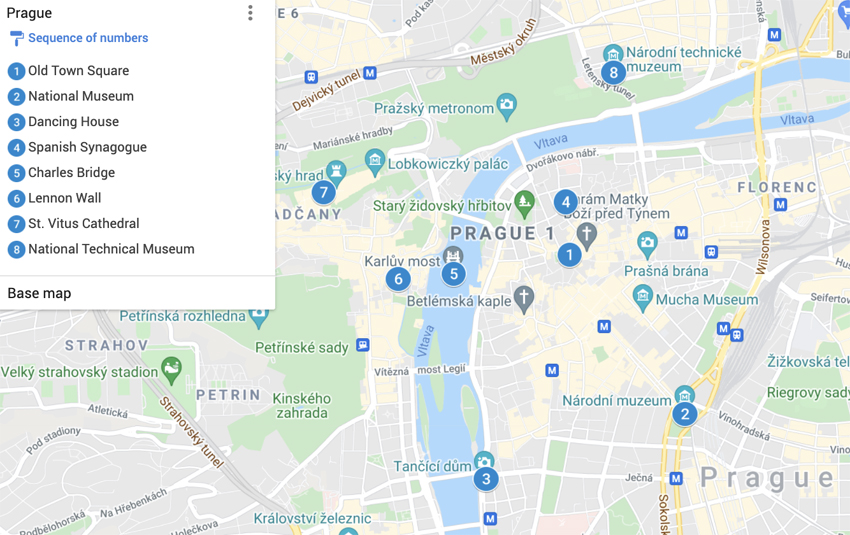Prague is popular. So popular that eight million, mostly foreign, tourists go there annually. It’s convenient to get to with an array of air, rail and road connections. Once there, you can visit many attractions for free or eat at haute cuisine restaurants. It really does have something for everyone, from all-night clubs to classical music concerts. You can stroll on one of the most famous bridges in the world, the Charles Bridge, or sit in one of the hundreds of cafes and enjoy delicious desserts. For a world traveler, it’s a must-go destination.
Why We Went to Prague and How Long to Visit
In August and September 2021, my wife Khadija and I went on a five-week drive through Eastern Europe and visited many of the great cities of the region. We were excited about going to Prague, as neither one of us had been there. We spent a jam-packed four days and didn’t see all the attractions we would’ve liked, but no one could see every historic site, museum and quirky statues in a week or even two. In this map, you can see some of the places we went to.
The Prague historic area is located in five of the city’s 112 cadastral areas (subsections of municipal districts). On one side of the Vltava River:
- Old Town (Staré Město) with the Old Town Square
- New Town (Nové Město) with Wenceslas Square
- Jewish Quarter (Josefov)
On the other side:
- Castle District (Hradčany) with Prague Castle
- Lesser Town (Malá Strana)
Charles Bridge is the main pedestrian route linking the two sides of Prague. The street signs indicate which section of the city you are in.
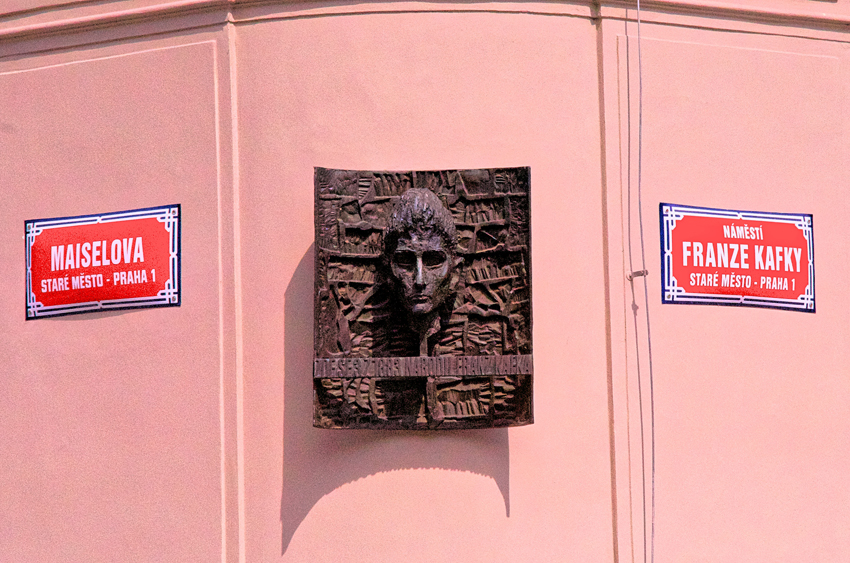
The sign indicates you are at the intersection of Maiselova and Franz Kafka Square, in Old Town (Staré Město). Praha is the Czech spelling of Prague.
The Prague Tourist Information centers are fantastic. They give you as much time as you need and have numerous maps and brochures to help you.
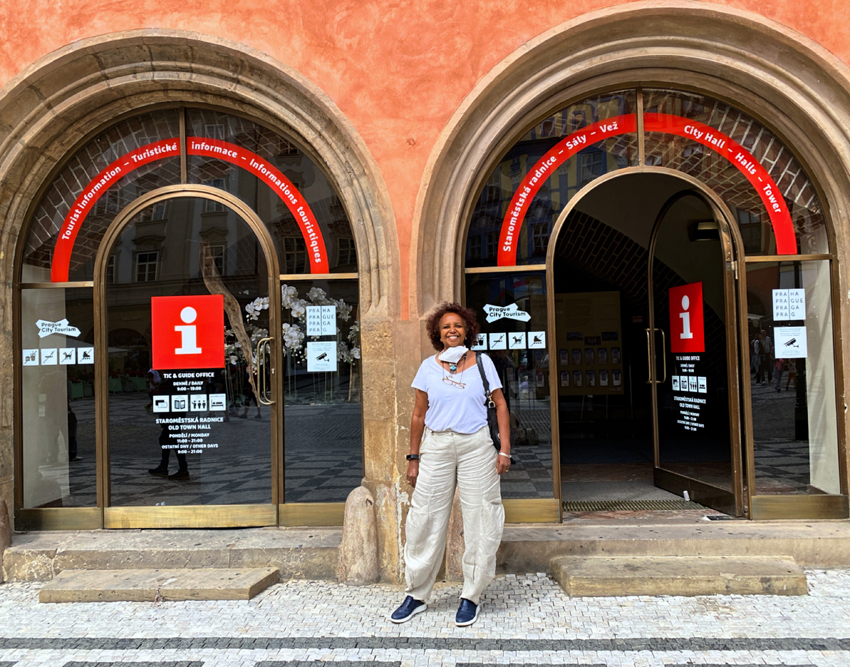
When we arrived, the world had been through a year and a half of Covid. International travel was restarting. Under this circumstance, Prague probably had less than half of its normal tourism level, but it was still bustling. We were told that in pre-pandemic times, sometimes people were shoulder-to-shoulder when crossing the Charles Bridge. In our case, we easily walked over it anytime of the day.
I recommend a minimum of three days to get a taste and a week to do it justice. You could spend more than a week If you use it as a base to travel around nearby parts of the Czech Republic. This post is just a glimpse of what the city offers.
Is Prague Safe?
Prague is definitely safe in the tourist areas. We were warned about pickpockets. The police try to keep control of them and their success waxes and wanes. Late at night or early morning, there could be drunk revelers which potentially could cause problems, but seldom does
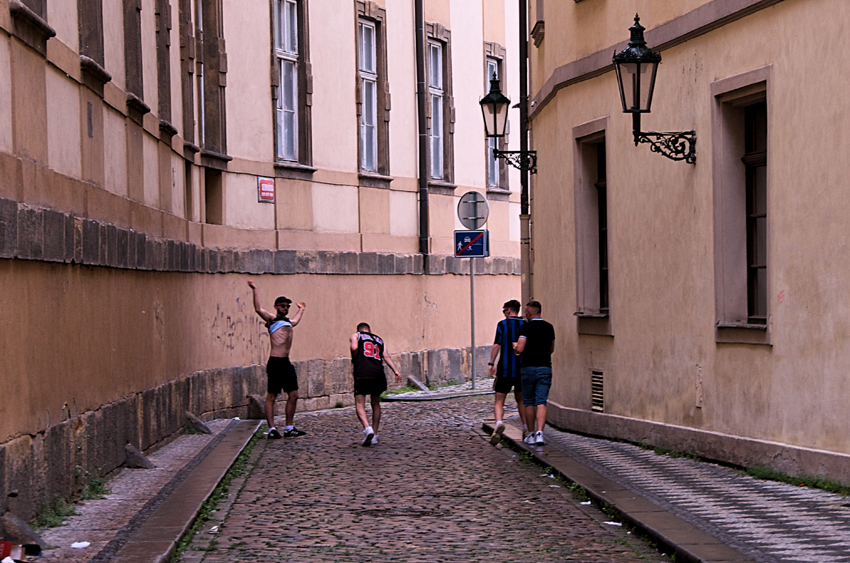
Here, as everywhere you travel, employ basic safety precautions and use common sense to avoid problems.
How to Get Around in Prague
We walked for hours each day. Luckily, we had good shoes because many of the sidewalks and streets are stone and hard on the feet.
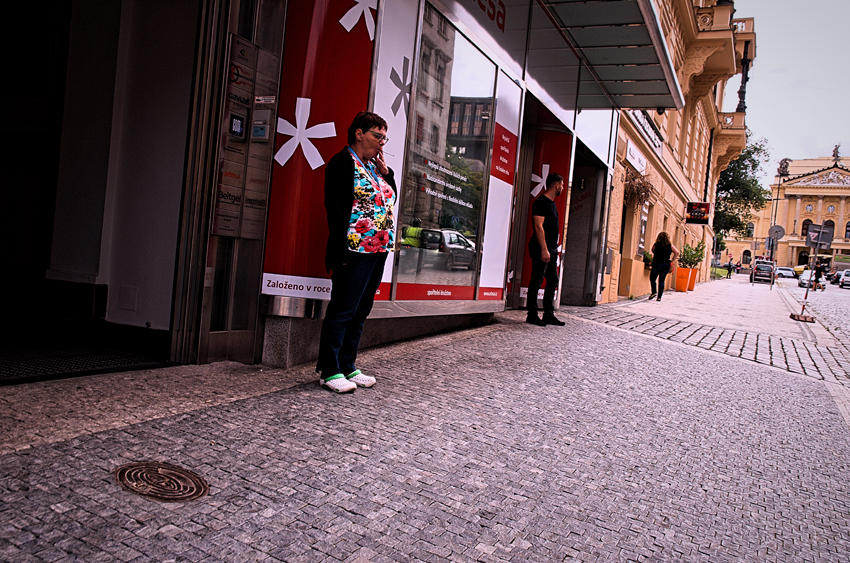
On our second day, we learned how to take the Prague Metro (subway), trams and buses.
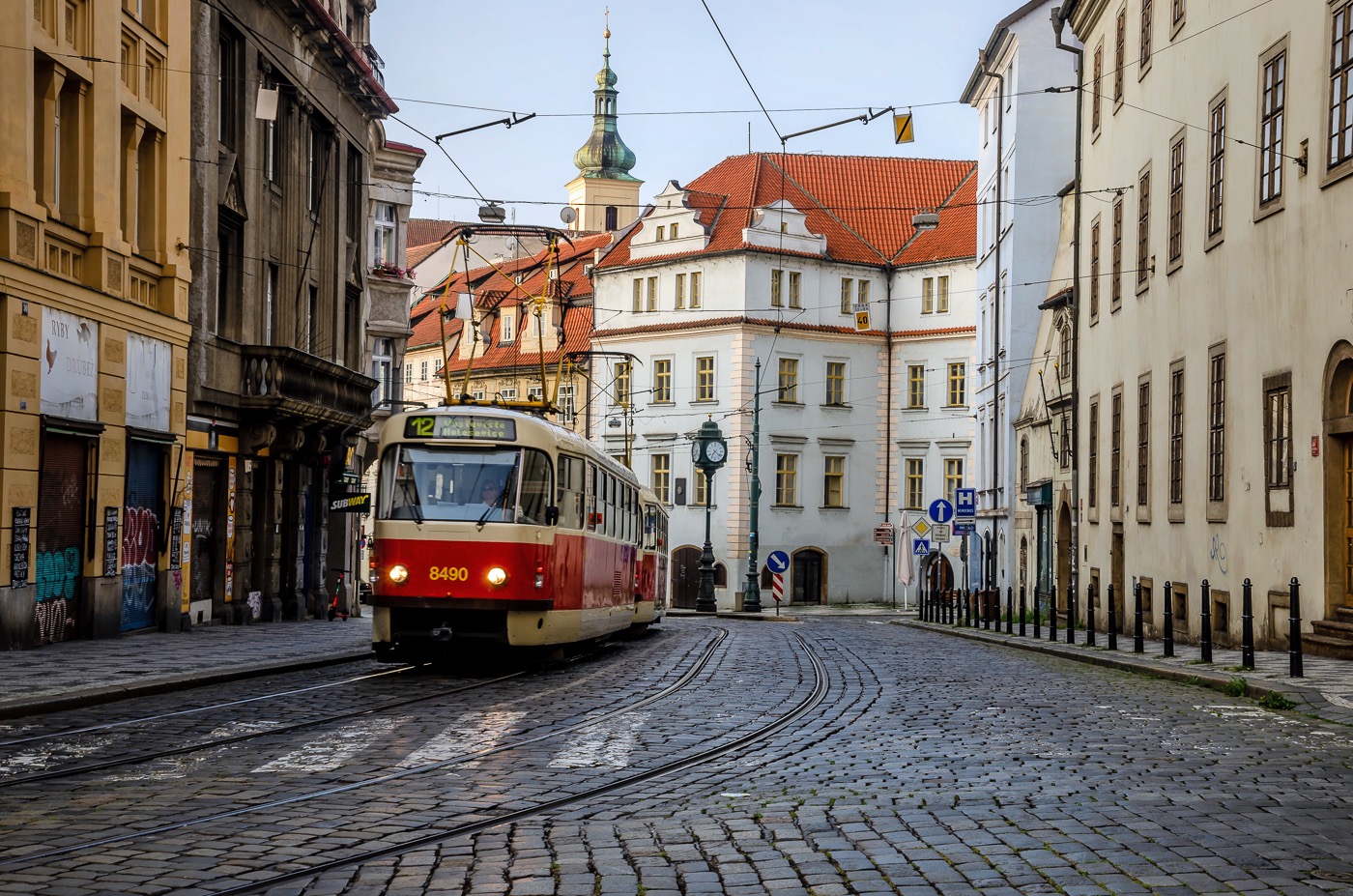
We parked our car in the hotel garage and it was by far the most expensive of our trip at €35 ($40) / night. I suppose we could’ve found something cheaper, but it was a hassle as driving in Prague was confusing with narrow one-way streets and traffic.
Like everywhere, ride sharing is available. So far, Prague is the only city in the Czech Republic where Uber is available.
Is Prague Expensive?
Food and drink in most restaurants and cafes, especially for beer and wine, are noticeably cheaper than in Western Europe. Other items, such as clothes, seemed to be similar to other European countries.
When we were there, one US$ equaled about 21 CZK (Czech korunas or crowns in English) and about 25 for the €. Some hotels, shops and restaurants accept Euros, but many only take Czech korunas.
When withdrawing cash from an ATM, be sure to use only a bank and not a stand-alone machine, as the exchange rate is much better. When charging on your credit card or using a debit card, select the local currency and not your home currency. I tested it a couple of times and found that charging in US$ cost almost 10% more.
Old Town (Staré Město) Square
We crossed Old Town Square several times each day. It’s a fun place to hang out to people-watch and admire the many architectural styles, as you can see from this bird’s-eye view from the Old Town Hall tower.
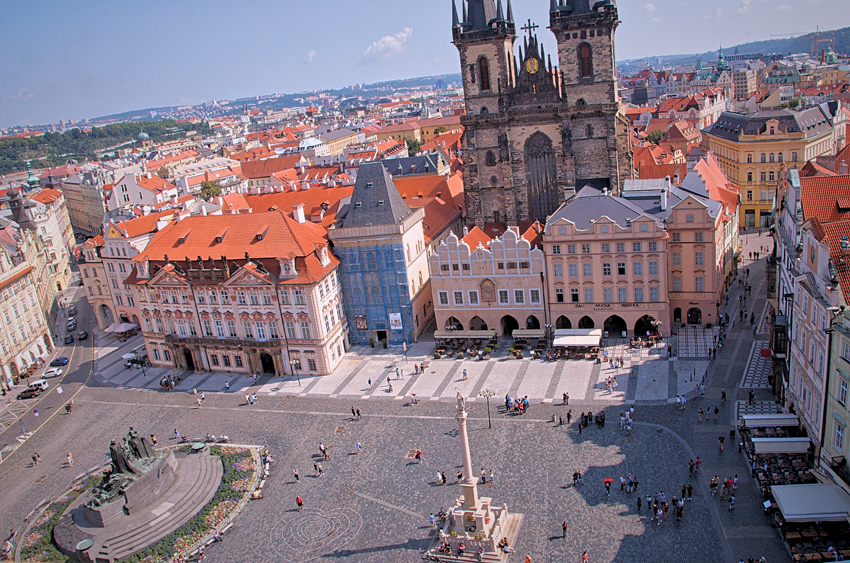
On the right is the gothic Church of Our Lady before Týn. In the left corner is the rococo Kinský Palace. The ship-looking, grey structure on the lower right is the Jan Hus Monument. He was a Church reformer who inspired Hussitism, a predecessor to Protestantism. Many past visitors may not recognize the white Marian (Virgin Mary) Column which was completed in August 2020. It’s a reconstruction of a column standing from 1650 to 1918.
On the other side of the square is the baroque St. Nicholas Church.
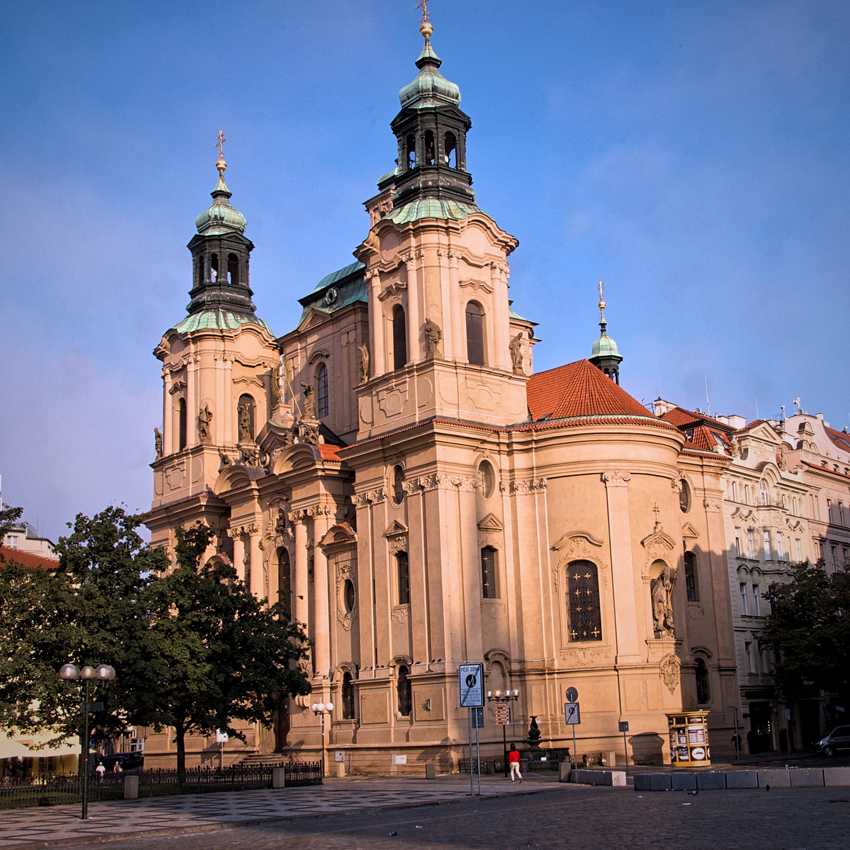
The star of the square is the Astronomical Clock on the Old Town Hall. It has an astronomical dial and a monthly calendar dial with the 12 signs of the zodiac. Crowds gather every hour from 9 AM till 11 PM to watch “The Walk of the Apostles”.
I really liked the skeleton with an hourglass (grim reaper?) and the Turk figure with a lute (decadent pleasure?).
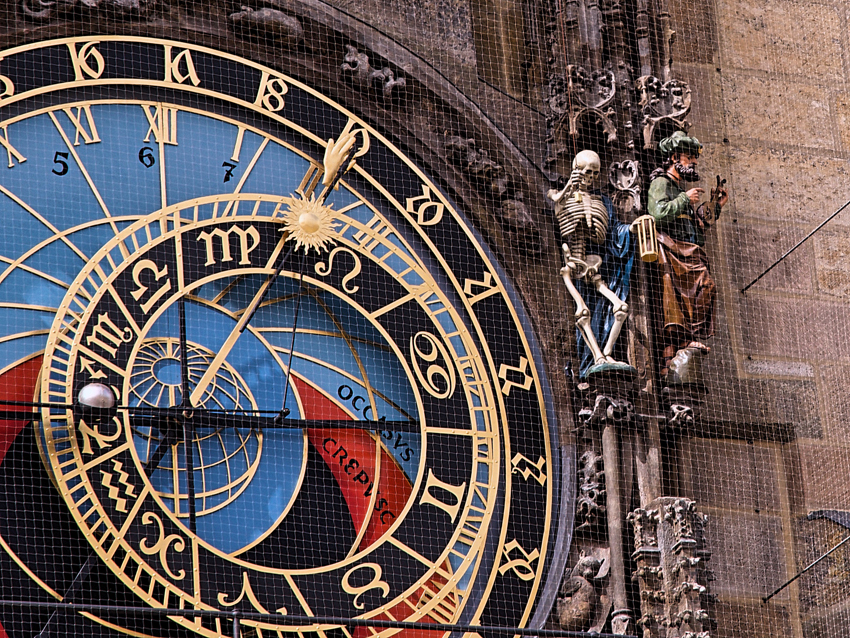
In the tower, we saw the Apostle figures in the mechanism which rotates them.
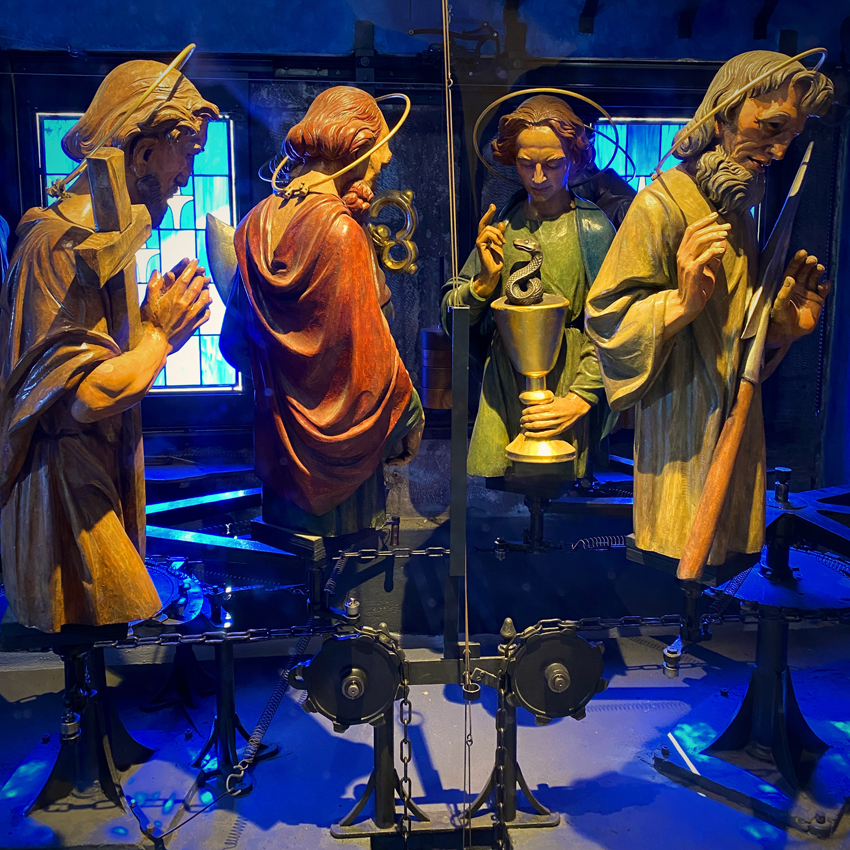
The Old Town Hall Tower can be entered for €10 or CZK250, I highly recommend it for the 360-degree view and great scenes like this.
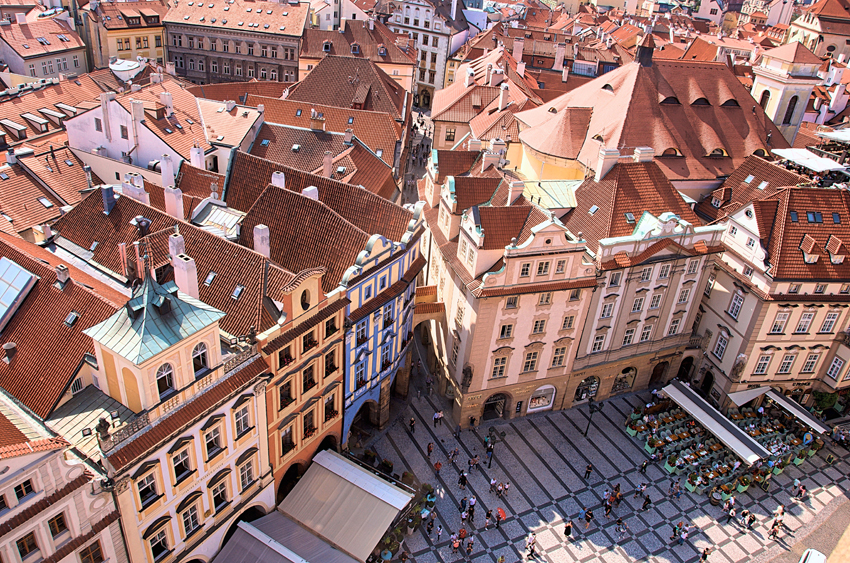
New Town (Nové Město)
We visited the National Museum (Národní muzeum) to check out its historical, artistic and natural history collections and current exhibitions. It was time well spent, but the most memorable part was the neoclassical building and especially the interior steps.
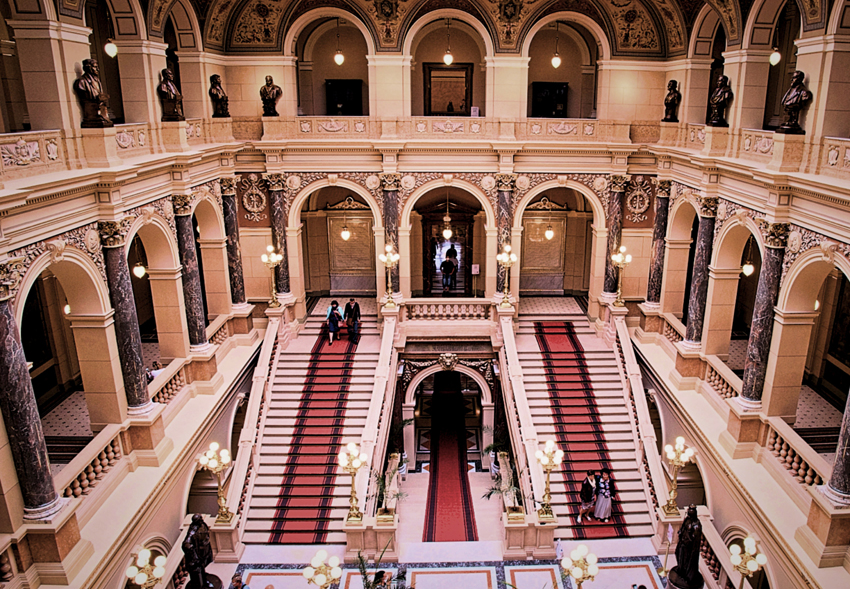
Wenceslas Square is a bustling stretch of retail stores, restaurants, hotels, street vendors and a line of buildings from five to eight stories of various architectural styles. It’s really a boulevard in the shape of an extended rectangle. It has had many notable celebrations and demonstrations. The best view is from the top of the steps of the National Museum by the statue of St. Wenceslas on a horse.
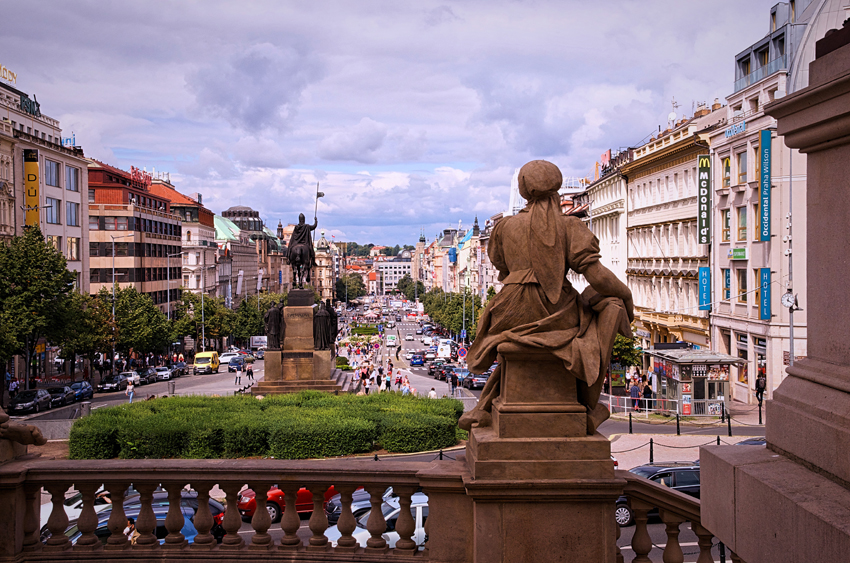
It took us about 30 minutes from Old Town Square through non-tourist commercial streets to find the Dancing House (Tančící dům). It was designed by Frank Gehry and others and built in 1996.
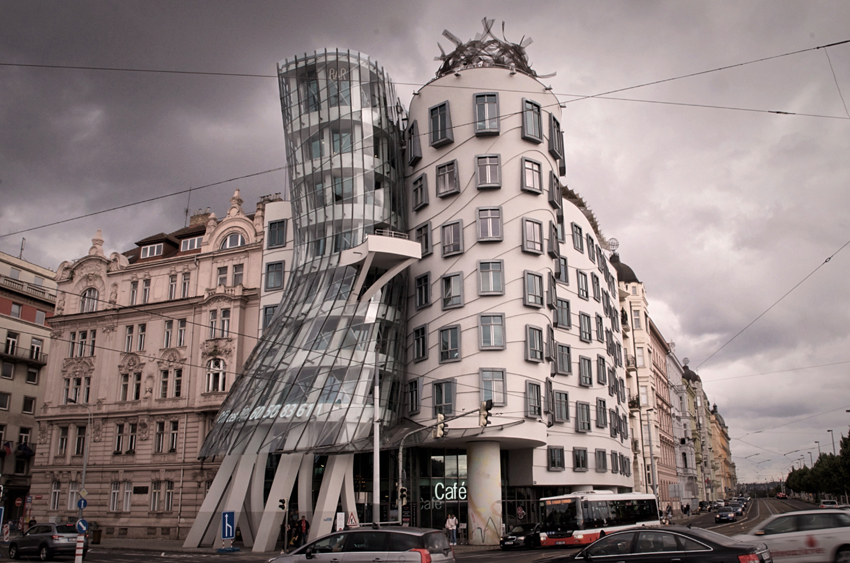
Gehry originally named the house Fred and Ginger (after the dancers Fred Astaire and Ginger Rogers), but thankfully that Hollywood name didn’t stick.
Jewish Quarter (Josefov)
My most vivid memory of the Jewish Quarter is the Franz Kafka Statue, here pictured with our guide Tomas.
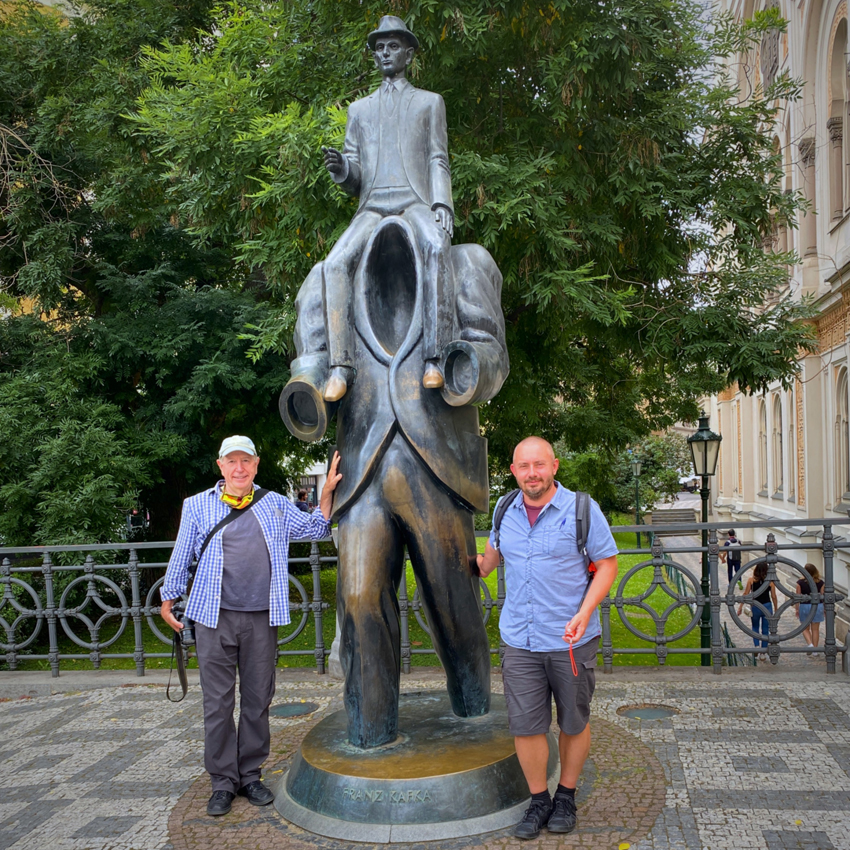
Kafka was a native of Prague, although he spoke and wrote in German. He is known for his fantastical, absurd and bizarre stories (e.g., “The Metamorphosis”, in which the protagonist wakes up as a huge cockroach). The statue references the author in a scene from his early short story, “Description of a Struggle” which is a murky, surrealistic three-part tale with multiple interpretations. In one he is having a dialogue with an acquaintance who is actually himself. The lower body is a hollow suit and the small one is Kafka.
The Jewish history in Prague is mostly one of various levels of discrimination with a few instances of relative tolerance. In the 16th century, the Habsburgs expelled them twice. Yet in the early 18th century, the Jews accounted for about one-fourth of Prague’s population, making it the most populous Jewish city in the world. This level of affluence and acceptance was not sustainable and they were expelled again in 1745. During the Nazi occupation, over 85% of the Jewish population in the country (then called the Protectorate of Bohemia and Moravia) were killed. The main historical buildings are from the 19th century in an art nouveau style and synagogues from different periods, such as the Spanish Synagogue. It’s the newest synagogue, completed in 1868 in a Moorish Revival style on the grounds of the oldest synagogue.
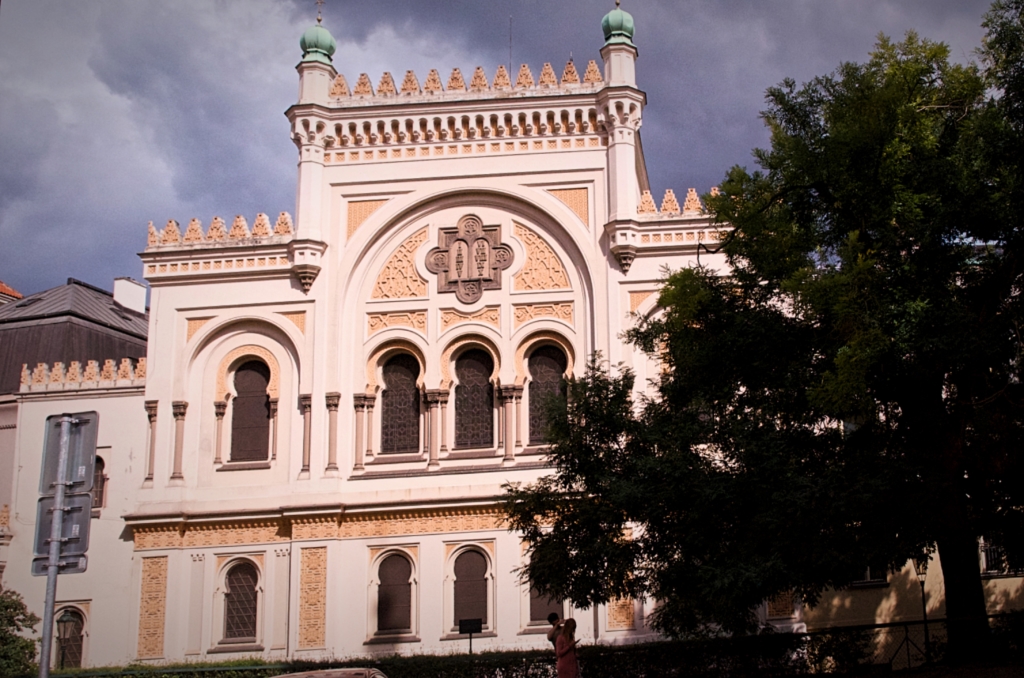
We missed going to the Jewish Cemetery (Starý židovský Hřbitov) but it will be the first thing we visit when we return. Graves are from the 15th century to the 18th century.
Charles Bridge
Charles Bridge is arguably the most famous landmark in Prague. The gothic stone bridge, connecting the Old and Lesser Towns, was built in the 14th century. We crossed it a few times and on our last day we went in the early morning fog
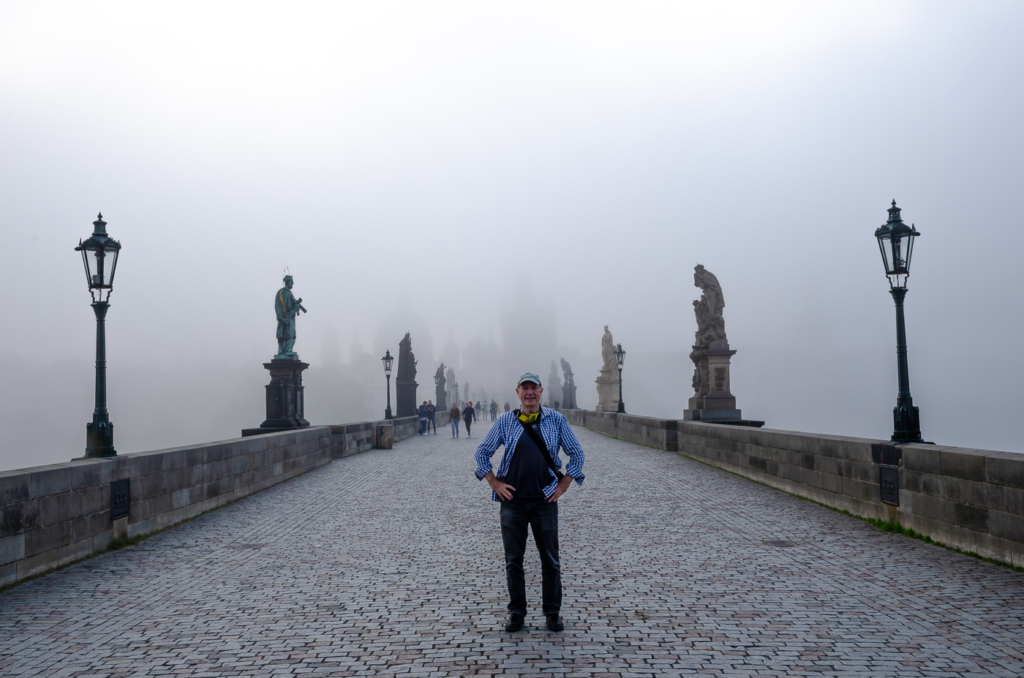
The bridge has 30 baroque statues and most are copies with the originals in museums. One of these is of St. John of Nepomuk, who was executed and thrown into the river from the bridge.
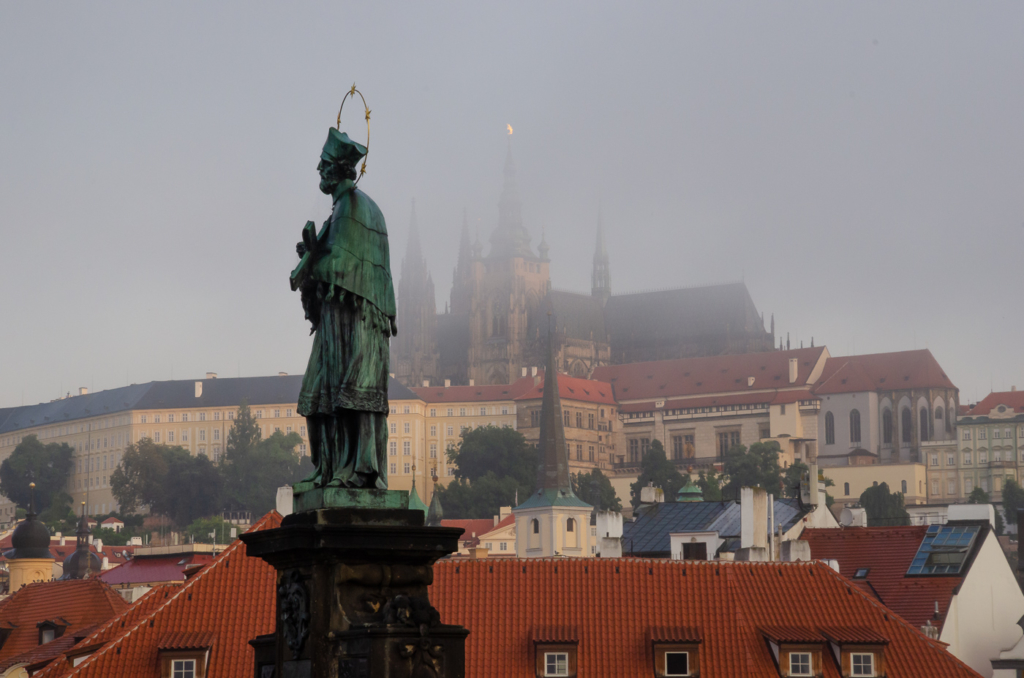
The bridge is anchored by towers at each end, here’s the Old Town side.
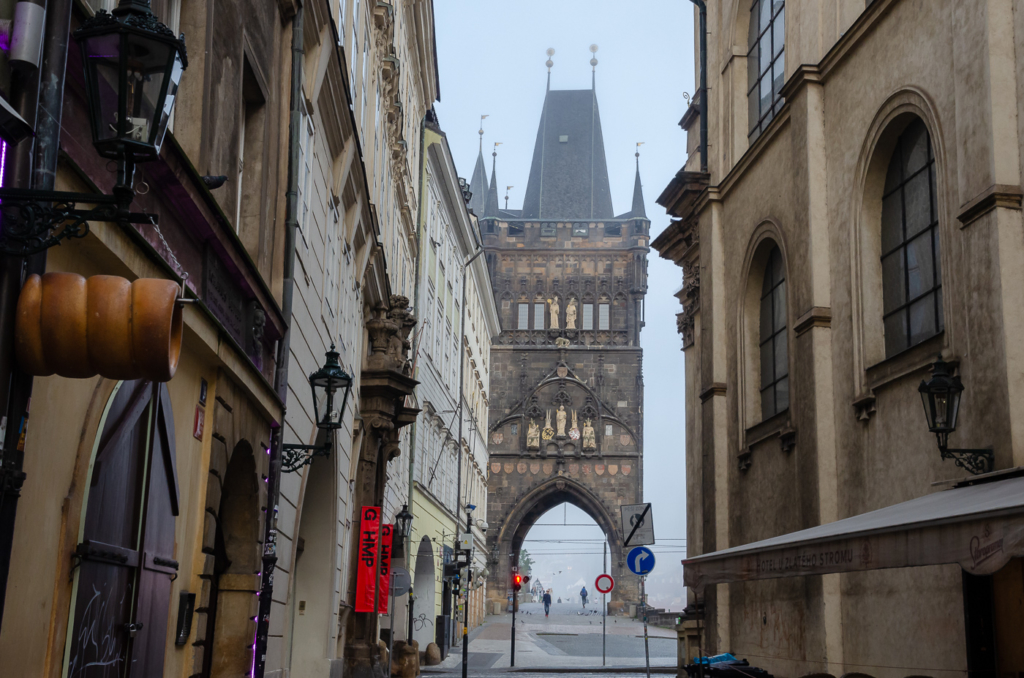
Lesser Town (Malá Strana)
As we entered Lesser Town, we saw a statue of a troll-like figure called a “vodník” in a canal. This statue of a mustached, pipe-smoking water fairy with swollen fingers is one representation.
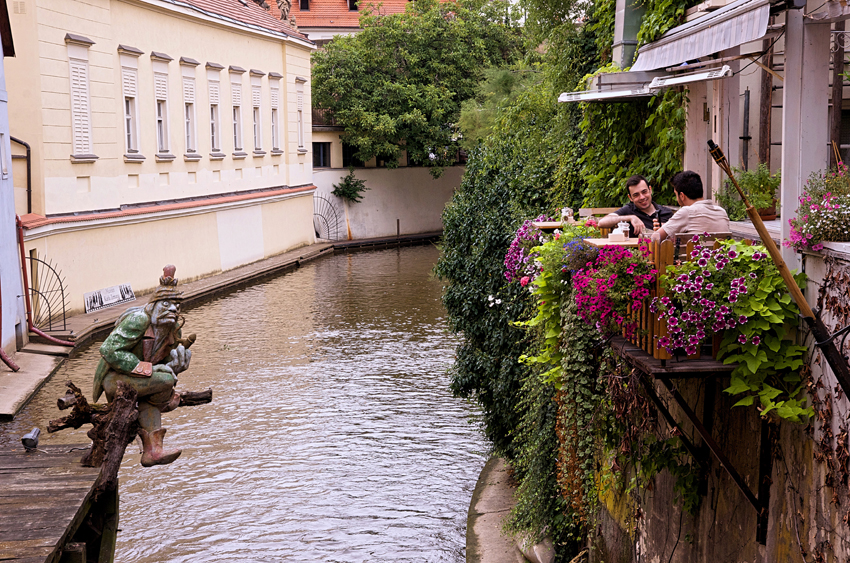
They live in a pond or under a bridge, sometimes causing mayhem like breaking dams and drowning people and animals.
Not far away is the psychedelic John Lennon Wall, full of graffiti and “All You Need is Love” with the last word in several languages.
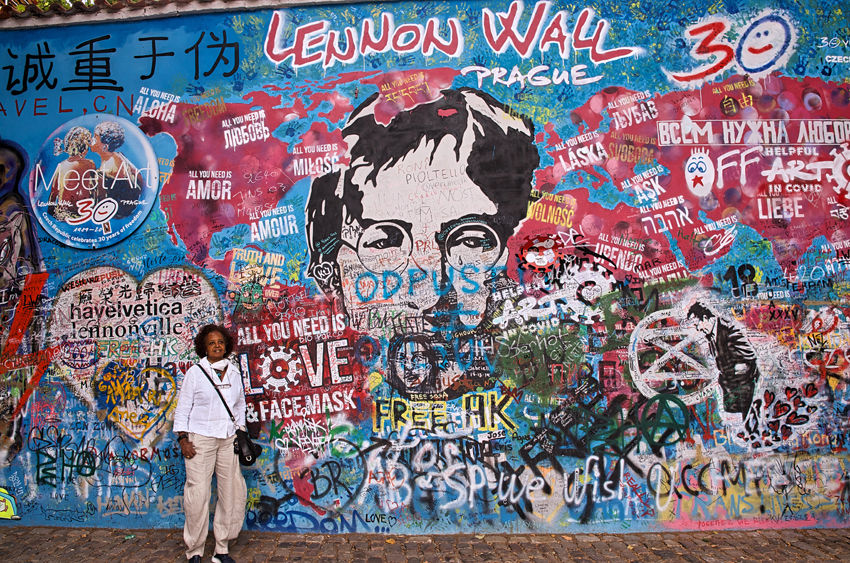
This is a curious place for a memorial of the Beatle who was fatally shot by a deranged young man. He was only briefly in Prague once. Yet here, he became an anti-war hero for many young Czechs and an unknown artist painted his image on the wall. Afterwards others added to it, eventually eliminating the original image. The wall has been a point of anti-government resentment, especially after the Prague Spring where the Communist government eliminated short-lived democratic reforms.
The wall belongs to the Sovereign Military Order of Malta, whose church and monastery complex is located behind the wall. Over the years, they have whitewashed it, but images kept reappearing and they have now accepted it as a permanent and ever changing mural.
I clearly remember Khadija breaking into tears when listening to the memorial service of John Lennon on the radio when the song “Imagine” was played. Thus, I understand how this memorial could have a permanent influence in Prague.
Castle District (Hradčany)
St. Vitus Cathedral (Katedrála sv. Víta) dominates the city skyline and is the most identifiable building in the Prague Castle complex and the spiritual symbol of the Czech Republic.
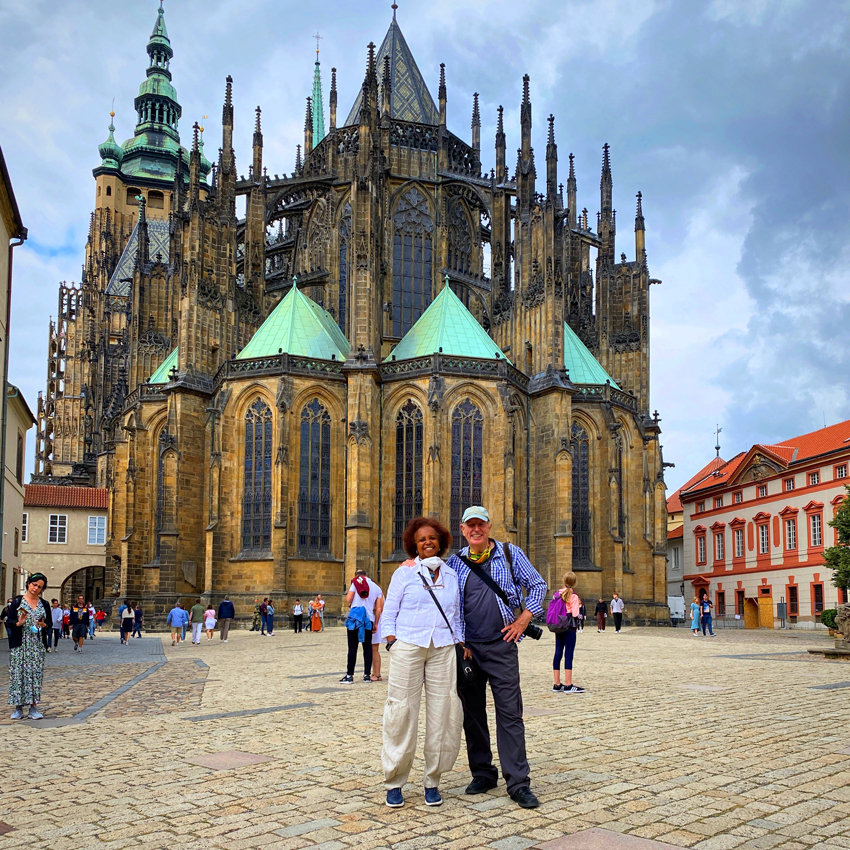
Construction on this gigantic, gothic masterpiece was started in the 14th century. Cathedrals invariably take a long time to complete, in this case almost six centuries. The cathedral is a place of burial of several patron saints, sovereigns, noblemen and archbishops. Czech kings and queens have also been crowned here.
Tours are available of the interior, especially of the spectacular St. Wenceslas (the “Good King Wenceslas” of the Christmas carol) Chapel, but we didn’t (next time). We stepped into the cathedral and found a soaring arched ceiling, stained glass windows and elaborate gold-mosaics, anchored by the recently installed (2018) statue of Saint Adalbert, the patron saint of the Czech state, in the nave.
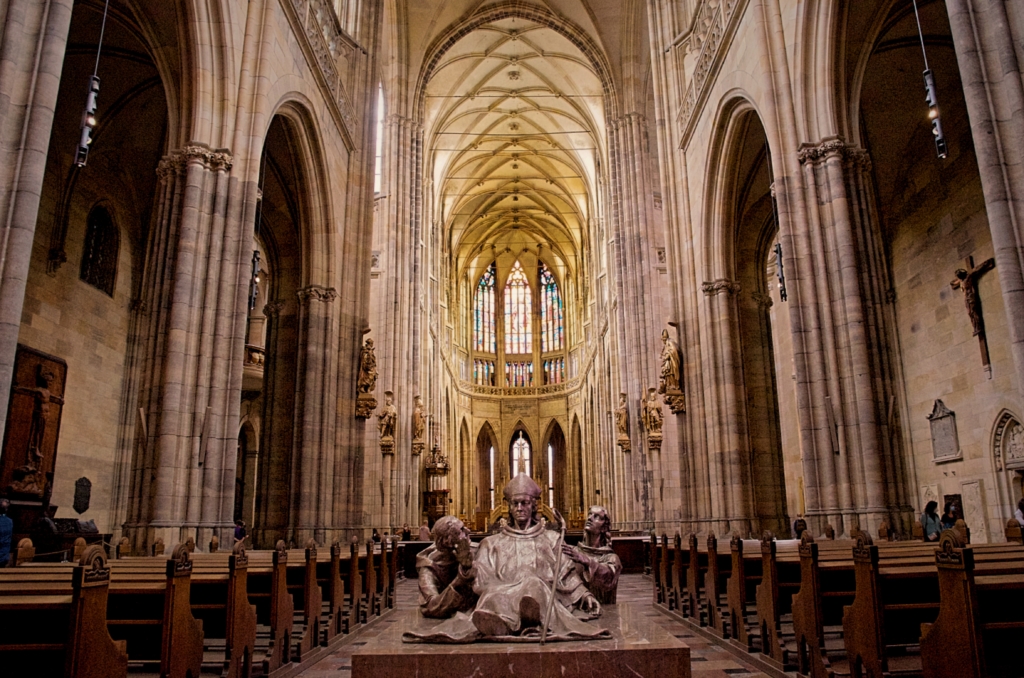
The Prague Castle area is the biggest in the world according to the Guinness World Book of Records. If you like architecture and history, you could easily spend a day there. One place not to miss is the Castle Square with a palace, fountain and ornate, guarded entrance.
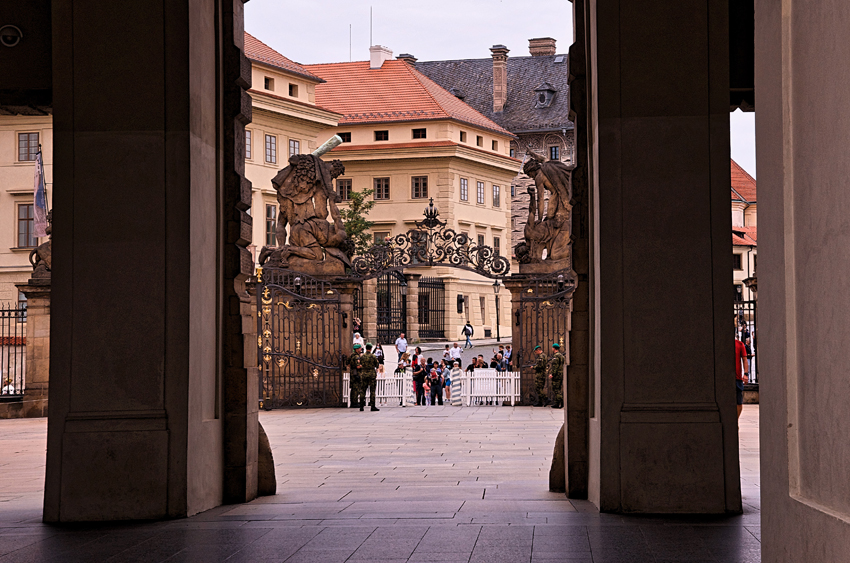
It’s also the official residence of the president.
Throughout the complex, you can see remains of the castle wall.
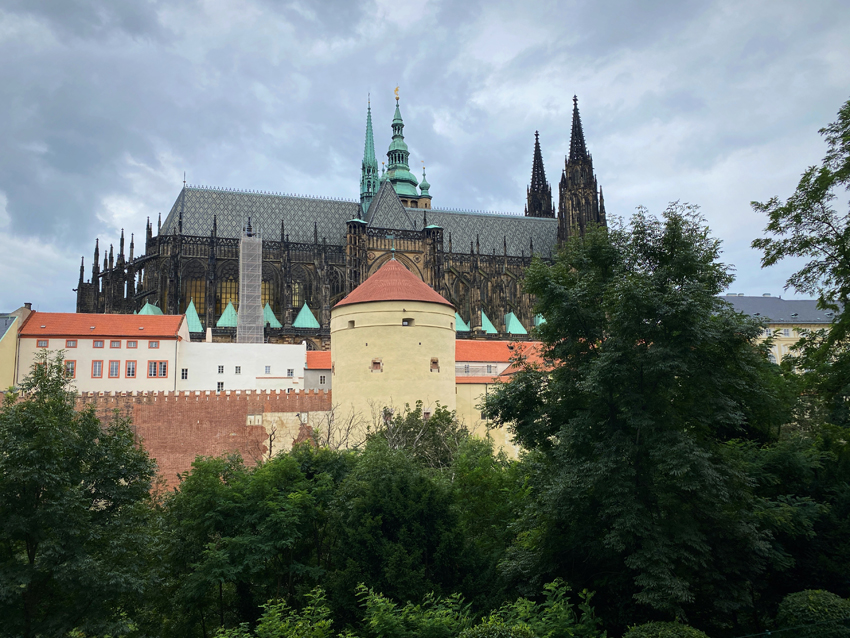
While the complex center is mobbed with tourists, on the outskirts you may be able to see some local life, such as these children playing in a medieval make-believe.
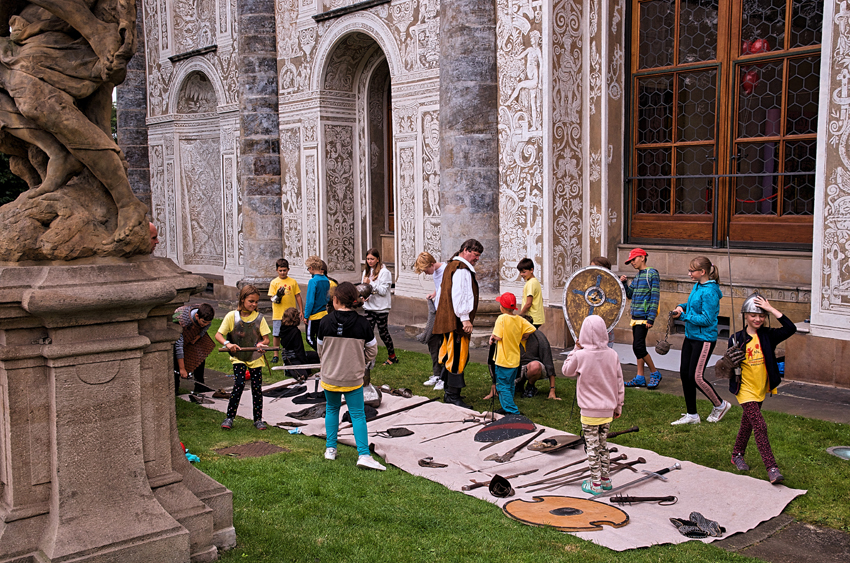
Outside of the Historic Area
The unexpected treat was a visit to the National Technical Museum which documents scientific achievements in the Czech Republic and in the world. Each of the five floors was fascinating with exhibits on astronomy, architecture, printing presses and other fields. The highlight was the large hall with vintage cars, trains and planes.
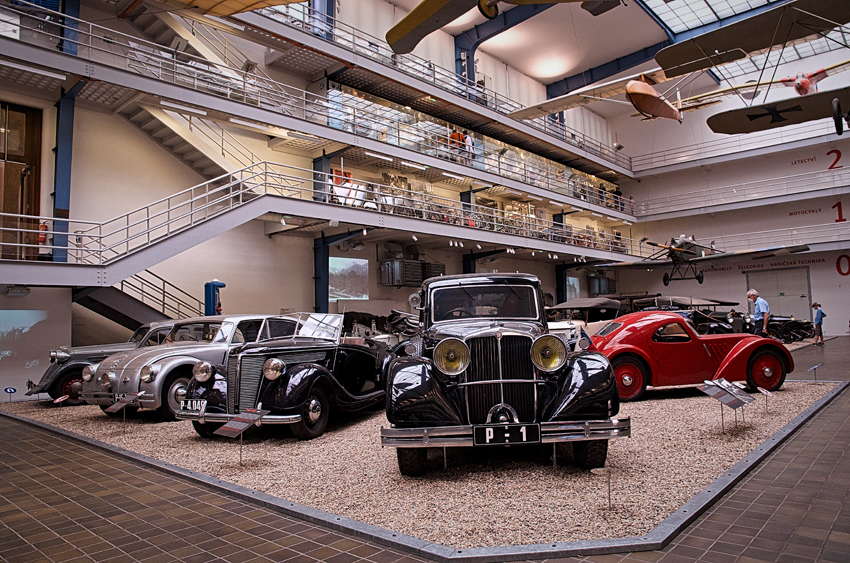
I highly recommend crossing the Vltava River and exploring this wonderful museum. While there, take a break at the Bethesda Café, a few blocks away.
Where to Eat and Stay
If nothing else, Prague is a culinary experience. There are so many restaurants, pubs and cafes, you can always find something you like. At least once, you should try traditional Czech dishes like goulash and knedlíky (bread dumplings).
We had an exceptional Italian meal at La Bottega Linka which uses the special X-Oven, has an extensive wine offering and serves everything fresh.
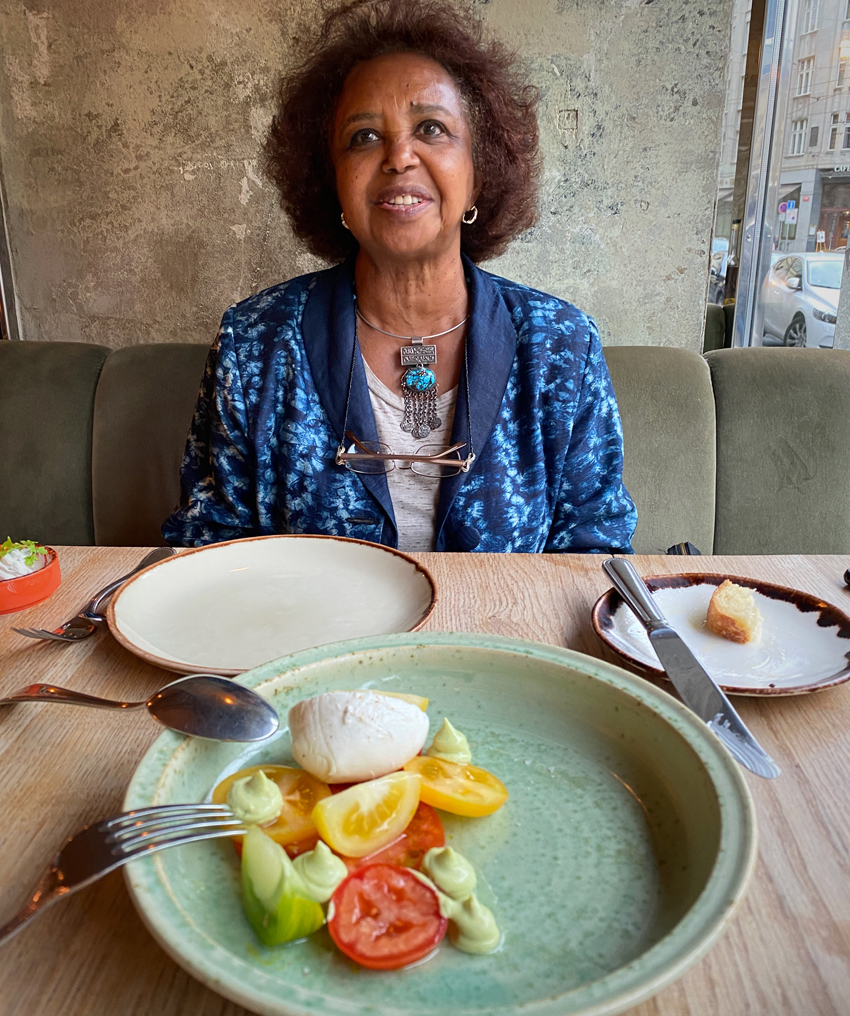
The service was outstanding. I wanted a type of draft beer they didn’t have, but they sent someone down the street to a bar to procure one for me.
Another terrific place was Engawa Yakiniku & Sushi, a Japanese restaurant. I thought it might be good as there were Japanese businessmen there when we walked in. It turned out to be great. A waiter told me that the Japanese master chef is one of five in Prague.
For a pub experience in a place that serves mainly local people, try out Hlávkův Dvůr in New Town.
There are many hotels of every price to stay. We stayed in the Hotel Paris Prague, a rather upscale place for us, but well worth it. The buffet breakfast was quite good and I loved the art nouveau design and decorations.
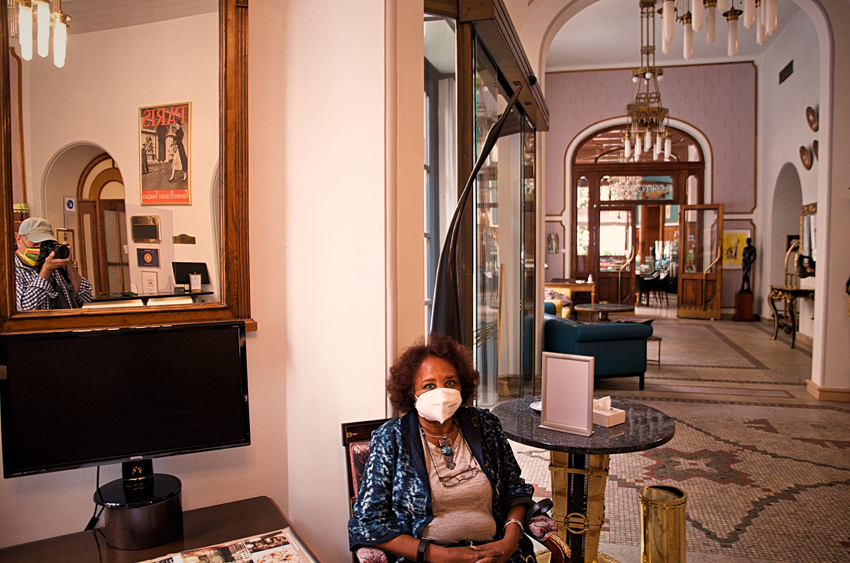
Final Thoughts
Prague was special in so many ways. If I had to rate my favorite things, I would say it’s a tie among the architecture, such as these buildings by the entrance to the National Museum…
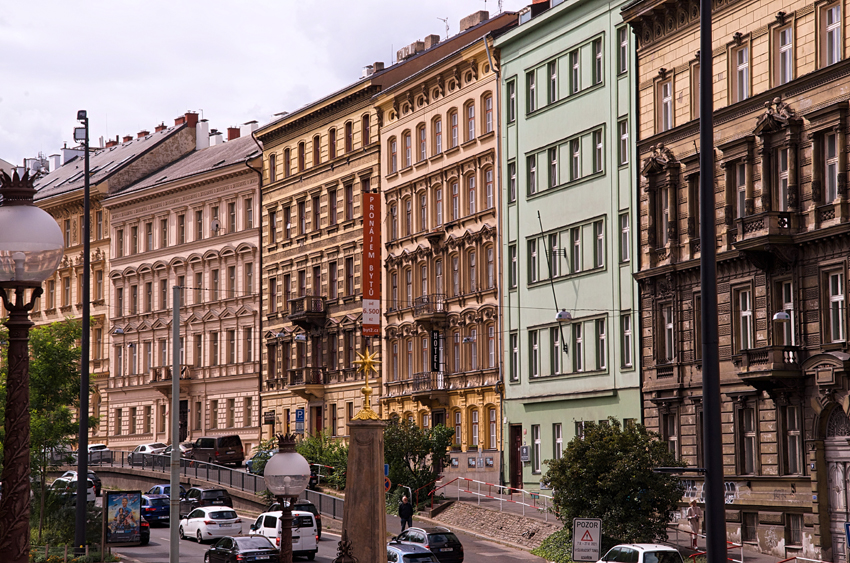
…and the people, like the charming Linda who is a medical student and fluent Czech, English, German, Italian and even knows a little Korean.
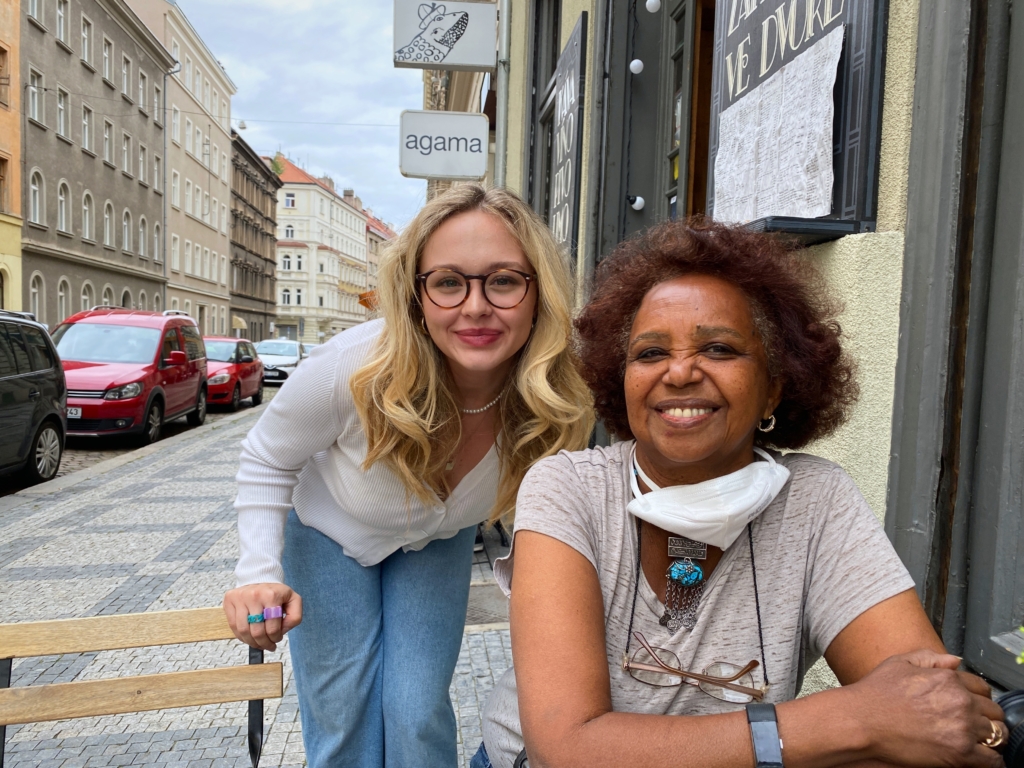
It’s no surprise that Prague is one of the most visited cities in the world!


